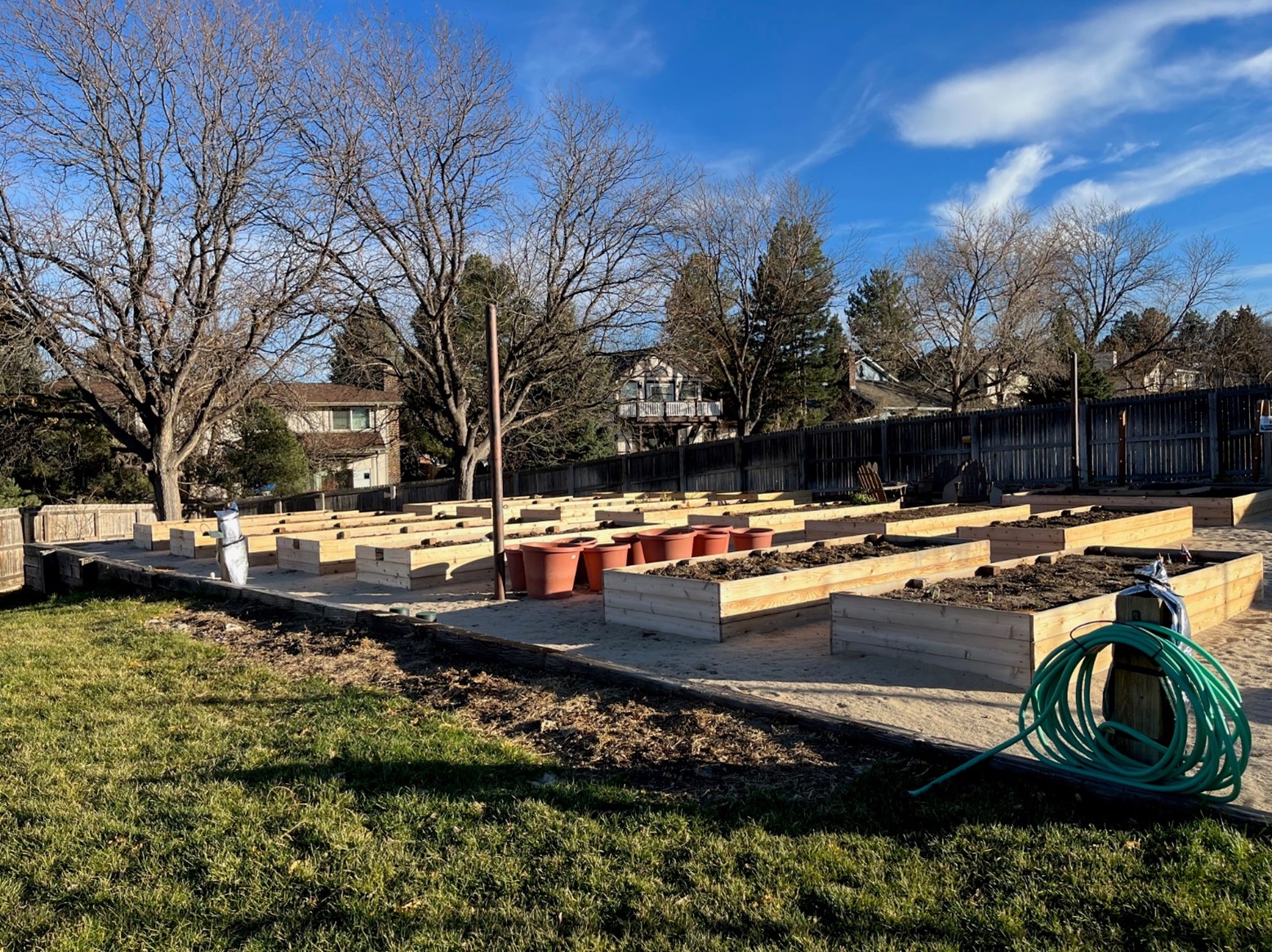By Tudi Arneill
This picture looks like the beds at Foxridge Community Garden have gone dormant. Actually, all kinds of activities are happening.
Did you know that there is more life below the surface of the soil than above it? In a single tablespoon of soil, there are 50 billion microbes alone. Although invisible to the naked eye, microorganisms are essential to healthy soils because they affect their structure and fertility. Even in winter, these microbes remain active, though a bit slower as temperatures drop.
Imagine a pinch of soil that weighs no more than a paper clip. That soil contains the following microorganisms:
- 3,000,000 to 500,000,000 bacteria
- 1,00,000 to 20,000,000 actinomycetes
- 5,000 to 1,000,000 fungi
- 1,000 to 500,000 protozoa
- 1,000 to 500,000 algae
- 10 to 5,000 nematodes
Microorganisms play a key role in decomposition (the breakdown of organic matter) and the cycling of nutrients and water to our plants and crops. Decaying organic matter provides microorganisms with energy for their growth and supplies carbon for the formation of new cells. As microorganisms help break down organic matter, they release essential nutrients and carbon dioxide into the soil (not into the atmosphere), fix nitrogen, and help transform nutrients into forms that plants can use. In addition, as these microorganisms move through the soil, they aerate it, helping to improve soil drainage and soil structure.
Soil microorganisms need the same things we do to thrive: food, water, and oxygen. Home gardeners can help encourage beneficial microorganisms to improve their soil fertility and structure in several ways:
- Add compost to your garden. Because carbon is the primary energy source for microorganisms, they need lots of organic matter to thrive. Adding compost to your garden will ensure they have a steady supply of organic matter. Just spread it on top and the microbes will work it over the winter. Compost is nutrient-rich, partially decomposed organic matter, ready for microbes to use.
- Avoid physical disturbances. Any time the soil is disturbed through tilling or compaction (by walking on it), it disrupts the structure of the soil and the habitat of the microorganisms living within it.
- Mulch your beds. Mulching with organic matter like leaves or pine needles helps retain moisture in the soil while adding organic matter back into the soil. Mulch is a protective cover of rough organic matter that is slowly broken down by microbes.
- Avoid pesticides. Chemical pesticides, herbicides, fungicides, and fertilizers can devastate entire populations of microorganisms in our soil. Choose organic fertilizers instead such as compost and manure which release nutrients into the soil over time and don’t leave long-term residues like many chemical fertilizers.
As a gardener, the knowledge that my garden soil is being well-tended beneath the sun, snow, and mud of winter (for free!) is a comfort and well worth the effort to help the microbes do their jobs.
Sources: https://cedarcirclefarm.org/tips/entry/the-living-soil-microorganisms
Ohlson, Kristin (2014). The Soil Will Save Us. Rodale Press
